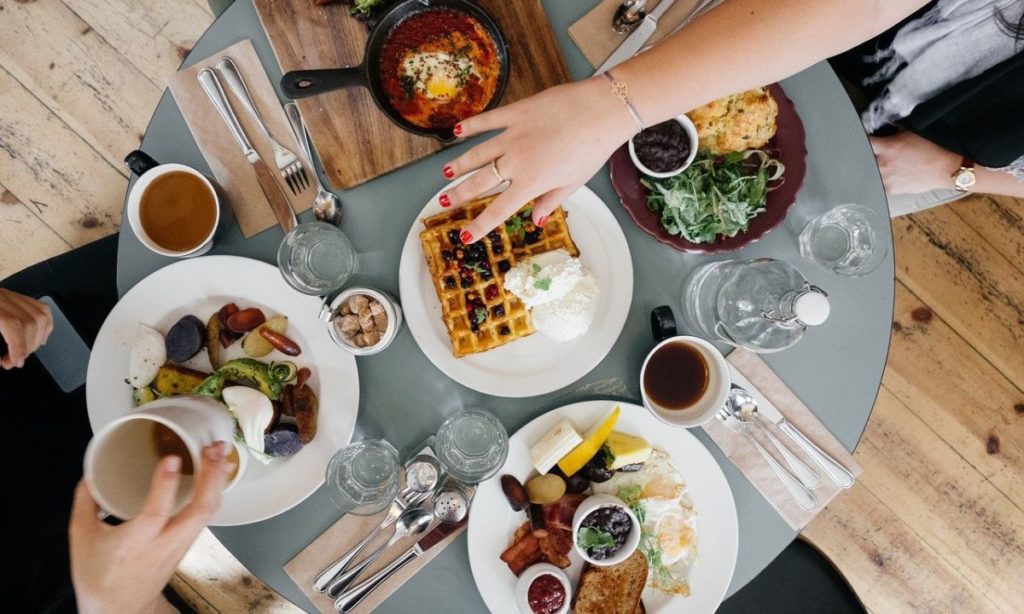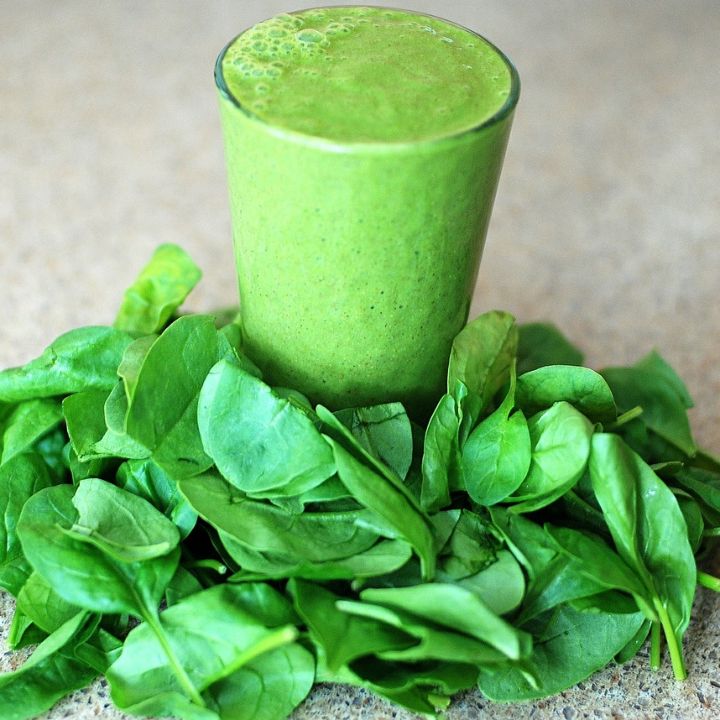“What’s a good breakfast for Mediterranean Diet followers?” is a question I often hear. The confusion is easy to appreciate when you see things like “Eggs Florentine,” or “Greek Omelet” on a breakfast menu in the United States.
Spoiler Alert: Those concoctions do not exist in their namesake countries, and certainly not for breakfast!
Those “recipes” are only marketing, pure and simple. The real breakfast of Mediterranean Diet followers in Italy is much simpler. And lighter. And healthier. Let’s get into it…
Breakfast in Italy, or la prima colazione, is really quite a humble thing, and the biggest blunder that you can make is to overdo it. In the U.S., we are often lectured about the importance of a substantial breakfast. “It’s the most important meal of the day,” or so the mantra goes.
Even if bacon and eggs are no longer our standard fare, we still manage to horse down a sizeable portion of fat, sugar, and calories with our bagels and cream cheese, and our Frappuccino Macchiato with an extra pump of caramel sauce. This would be a huge—possibly fatal— shock to an Italian’s constitution. (Yours too, but perhaps you haven’t realized it yet.)
From the Italian perspective, your stomach simply isn’t ready for such a bombardment just a few minutes after waking. Our bodies need to slowly adjust to being awake and that includes your internal organs. You wouldn’t leap out of bed and run a marathon, would you? No, you’d have to warm up, stretch, prepare—and only then are you ready for more taxing activities.
Yes, that’s not a bad metaphor; think of your stomach as a highly trained athlete. You must stick to a healthy routine if you want to stay fit and avoid injury (or a stomachache in this case).
This also leads back to our earlier discussion about WHEN to eat in Italy. Breakfast for Mediterranean Diet followers typically happens much later in the morning, and now research has proven that this traditional style of time-restricted eating contributes significantly to our overall health.

Mediterranean Diet Breakfast Foods
So if not a “healthy” breakfast of bacon and eggs, then what? A stack of buckwheat pancakes; a trough of steel-cut oatmeal; a bran muffin the size of a volleyball?
No, no, and no! That sort of thinking is definitely non-Italian. These so-called “healthy options” aren’t really much better than the Grand Slam breakfast at Denny’s. Because yes, size matters, and in this case, less is more.
Furthermore, do you really know what’s in that muffin? It’s been wrapped in cellophane and sitting on top of the counter at your local Starbucks for weeks, and yet it looks as fresh as the day it was made. What’s wrong with that picture?
What you really want—or rather, what your stomach wants—is just something small and understated. You’ll need some calories, of course, to nudge your metabolism into action, but overdoing it is a much worse mistake than underdoing it, so always err on the lighter side for breakfast.
However, don’t fall for the false idol, the green smoothie. Come on, we need “food,” not a laboratory experiment gone awry.
I don’t mean to pick on Dr. Hyman again, because he’s way smarter than me and knows more about nutrition, for sure. But what he often misses are the cultural nuances of the Mediterranean Diet, and how those small details have a large impact on a healthy lifestyle. Frozen berries? Protein powder? Minchia!


Mediterranean Diet Breakfast Foods
That’s not to say that you can’t enjoy a delicious breakfast. On the contrary, have a fresh-baked pastry, if you’d like. Well, not every day, but once or twice a week is fine. See, that’s the thing: don’t get too hung up on what you can or can’t eat.
Again, listen to your body, it knows. Your choice of breakfast will depend on several factors. What time did you go to bed last night? Did you have a big dinner? What are your lunch plans for today? Most importantly: are you even hungry or are you just eating out of habit?
Good habits form the foundation of healthy eating, making “decisions” very easy. Once you’ve programmed yourself to eat like an Italian, it will all become second nature to you. So don’t worry about it right now, with a little practice you’ll get there. It just takes a bit of time.
Caffè All Day
The only thing that your body absolutely must have for breakfast is coffee in one form or another. And you can forget about your mint-infused Chinese herbal chai-latte tea, as well. No, you need the real deal: high-octane Italian rocket fuel. It can be an espresso or cappuccino or any other incarnation of coffee.
The important thing is to get some caffeine into your bloodstream before you attempt any strenuous activity, whether it be physical or mental. This is the perfect time of day for this magic little potion, which contains maximum energy and occupies a minimum amount of space in your stomach.
Let’s talk about specifics. Other than a coffee-based beverage, what can you have for your Mediterranean breakfast? Believe it or not, when eating breakfast at home, the standard in Italy is cookies. I know, I know, it sounds like I’m contradicting myself already. But what you need to understand is that I’m speaking about a very specific type of breakfast cookie that is naturally low in both fat and sugar.

The biscotti themselves are relatively small and you’ll only have about two or three of them. If you can find local artisan brands, then you’re off to a great, healthy start to your day. The ingredients are simple: water, flour, a little sugar, and just a dollop of butter. That’s it—and there’s nowhere for any strange, unpronounceable chemicals to hide.
If you don’t have a local bakery that you trust, then one of the popular brands will do, such as Mulino Bianco, Pavesi, Balocco, or Doria. Even these industrial products in Italy contain very few ingredients because the manufactures know that Italians won’t buy them if they’re seen as being too complicated.
Along with the aforementioned espresso or cappuccino, this makes for a perfect breakfast. It takes away the hunger and gives you a little energy boost without filling you up. Perhaps you’re thinking that this won’t be enough to hold you over until lunch.
You might be right. Fortunately, the Italian meal plan has a solution for that. It’s called the spuntino. But that’s a discussion for another day…
FAQs – Best Breakfast for the Mediterranean Diet
What’s the best breakfast for the Mediterranean Diet?
While there is no “best,” people in Mediterranean countries tend to eat extremely light for breakfast. Many don’t eat at all and just have a coffee.
What about all of these Mediterranean omelets I see on restaurant menus?
Those are foreign inventions and don’t exist in their namesake countries. At least not for breakfast. Eggs are only eaten for lunch or sometimes dinner.
Then what do they actually eat for breakfast in the Mediterranean, if not eggs, bacon, potatoes, waffles, etc.?
Simple pastries or special “breakfast cookies” are the most common choices. Fruit or fruit juice is another option. Maybe yogurt in some countries.
Then why did my hotels in Rome and Athens have a huge buffet with all types of meats, cheeses, and yes, scrambled eggs?
Those are there for the foreign tourists. You’d never see an Italian or Greek eat those things at breakfast time.
What type of coffee for a Mediterranean breakfast?
Usually it’s espresso in some form, with or without milk. Read this article for a full explanation.
What time do they eat breakfast in the Mediterranean?
Usually it’s mid-morning, around 10:30, give or take.
Uff. Maybe I should just skip breakfasts entirely while on vacation.
Probably not a bad idea. If you want a “good” breakfast by American standards, you’ll be disappointed. But if you’re hungry, try the cornetto con Nutella instead.
